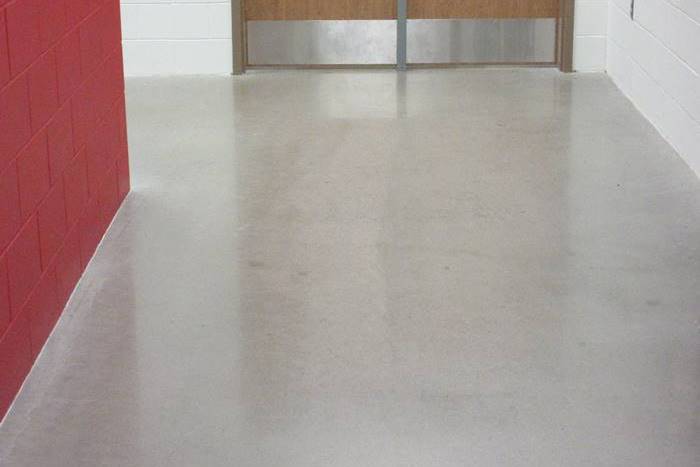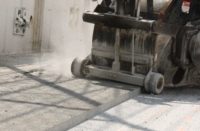
Photo courtesy of David Stephenson
In the last tip, you learned THE definition of polished concrete: The act of permanently changing a concrete surface, with or without aggregate exposure, to achieve a specified level of finished appearance.
You also learned that there are three types of polished concrete according to the American Society of Concrete Contractors’ Concrete Polishing Council. All three types have identifiable reasons for use and will allow for a broadening of the market due to the lower pricing and quicker installation times. The last tip covered what burnished polished concrete (BPC) was and some of its uses, features and benefits.
Today, we’re diving into hybrid polished concrete (HPC). What is it and why should it get used?
Let’s start with the definition of HPC: A multistep operation, using a combination of large format grinding/polishing equipment, lightweight equipment and/or high-speed burnishing equipment, to mechanically grind, hone and polish.
Abrasives are used that either are friction rubbing pads or cutting bonded-abrasive diamond tooling in any combination to achieve the specified performance and finish. This method is:
- Less labor intensive than bonded abrasive polished concrete (BAPC)
- More durable than BPC
- More decorative than BPC and equal to BAPC
- Less costly than BAPC in both time and money to install
HPC is a mystery to most and so it’s an untapped opportunity!
Here’s the tip
When an owner or architect balks at the price of BAPC, the “normal product” you’re quoting, HPC is your Plan B! It can deliver most of what people want from polished concrete without the price tag and with a quicker installation.
Again, be sure to ask clients:
- What are the floor’s uses, level of traffic and maintenance plans?
- Do they want a specific aggregate exposure level?
If they answer vehicular and foot traffic, say they clean regularly and don’t need a highly decorative finish, then HPC may just be the perfect fit!
Because bonded abrasive-diamond tooling is still used for grinding, the floor can be flatter, show aggregate, and shine at any level because of the hybrid- and diamond-impregnated burnishing pads.
What HPC doesn’t do is highly refine the surface so it has a bit less coefficient of friction (COF) and its shine won’t last quite as long. This outcome will please most owners and architects. Try a mock-up. I think you’ll be surprised.












